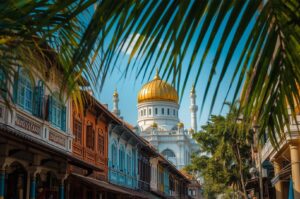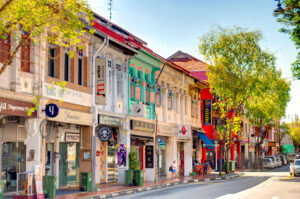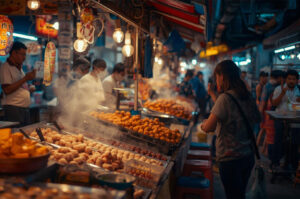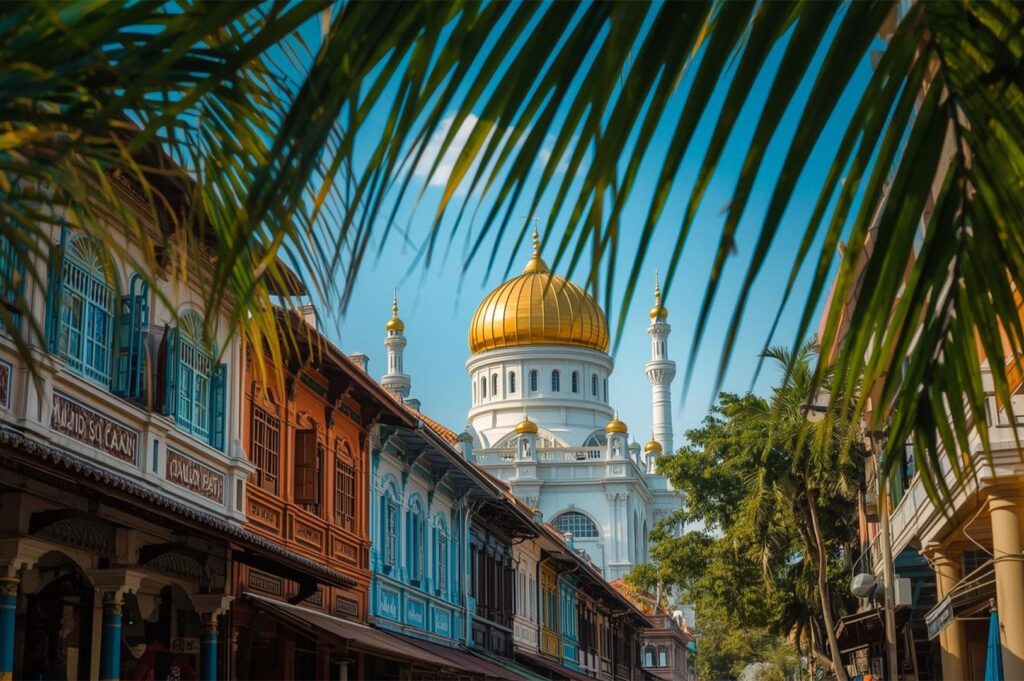
Nestled just north of Singapore’s vibrant city centre, Kampong Glam—sometimes spelled Kampong Gelam—is one of Singapore’s most iconic and historic districts, and a must-visit neighbourhood for locals and tourists alike. Established as Singapore’s Muslim Quarter and the heart of the Malay community, its rich history speaks through every street, mosque, and heritage shop. Today, Kampong Glam weaves a vibrant tapestry of culture, food, and art where modern cafés, traditional eateries, textile shops, and hidden gems all coexist in harmony. Home to significant national heritage sites and living stories from Singapore’s past, the district is just minutes from Bugis and Waterloo Street, perfectly situated between famed areas like Kampong Java and Kampong Bugis. In this complete guide, we’ll explore the vibrant life, culture, and renowned food of Kampong Glam, share practical tips, and offer inspiration for every visitor to experience this living, breathing example of Singapore’s multicultural heritage.
Kampong Glam’s Rich History: From Royal Enclave to Cultural Hub
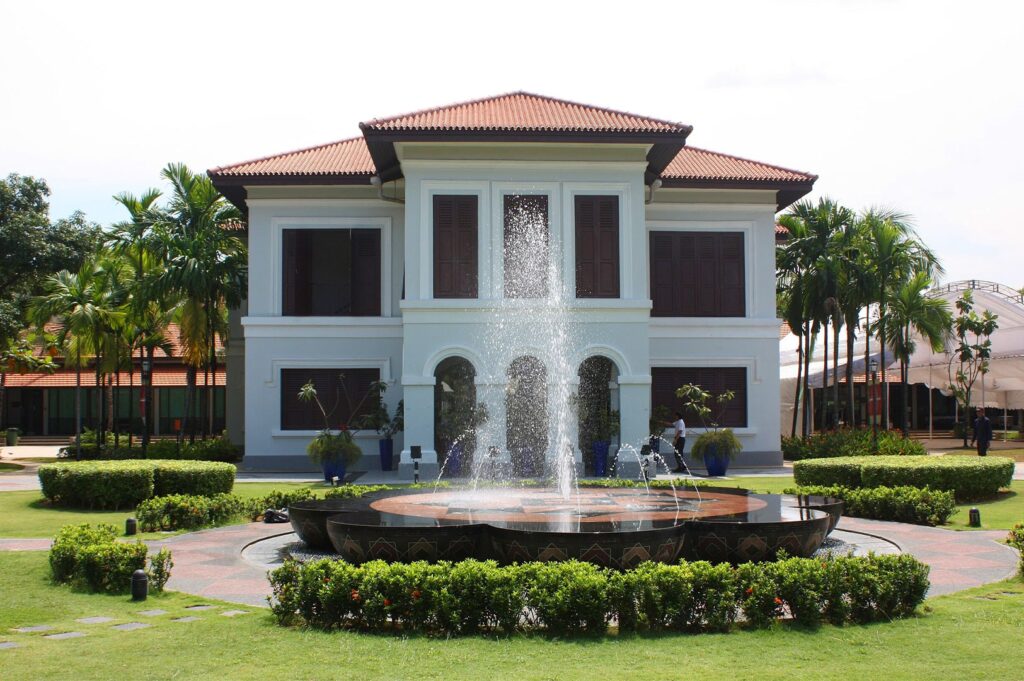
The story of Kampong Glam begins with its name. “Kampong” means “village” in Malay, while “gelam” refers to the gelam tree—once abundant here and vital to the local community for its medicinal, culinary, and seafaring uses. Long before colonial Singapore developed into a modern city, this land was home to the Orang Laut, local Malays and even connections to wider archipelagic trade, linking Kampong Glam to Kampong Malacca, Kampong Java, and other historic kampongs.
The area’s transformation began in 1822 when Sir Stamford Raffles, in his historic town plan, designated Kampong Glam as Singapore’s Muslim Quarter, assigning parcels of land specifically for the Sultan and Muslim community. Sultan Hussein, the first Sultan of Singapore, with support from Temenggong Abdul Rahman and the government, established his palace and the iconic Sultan Mosque as the heart of Muslim religious and cultural life. As Malay and Arab traders set up businesses, the district developed into a key port and trading site—rich in history, community, and commerce. Kampong Glam’s royal past and diverse generations remain evident not just in its streets, but in the pulse of its daily life, where the legacy of sultans, merchants, and diverse cultures has shaped a district unlike any other.
Architectural Heritage: Sultan Mosque, Shophouses & Visual Highlights
At the heart of Kampong Glam’s heritage is the majestic Sultan Mosque (Masjid Sultan), perhaps the most famous mosque in Singapore and a cornerstone for the city’s Muslim community. Originally built in 1824 for Sultan Hussein, it was later reconstructed in 1928, now renowned for its striking golden dome—set on a unique base created from glass bottle ends donated by the kampong’s faithful. The mosque is a centre for worship, community, and peace. Visitors are welcome during non-prayer times; the National Heritage Board and mosque guides encourage modest dress.
Opposite the mosque, the Istana Kampong Glam (now the Malay Heritage Centre) was once the royal palace, housing generations of sultans. Today, the beautifully restored building is a museum offering exhibits on Malay arts, the history of the Muslim community, local crafts, and Singapore’s multicultural development. As you walk along Muscat Street, Bussorah Street, and Baghdad Street, notice the iconic shophouses—these two-storeyed heritage buildings with roots in both Malay and Arab architectural styles, influenced by colonial Singapore’s penchant for fusion. Conservation efforts by the government and passionate local advocates have preserved these shophouse facades, creating a vibrant, photogenic neighbourhood where arabesque arches, geometric patterns and pastel colours feature prominently. The best photography spots include the palm-tree lined view of Sultan Mosque along Bussorah Street, colourful murals in the area, and the bustling crossroads at Haji Lane—each telling a story of evolving Singaporean identity.
Cultural Immersion: The Living Stories of Kampong Glam
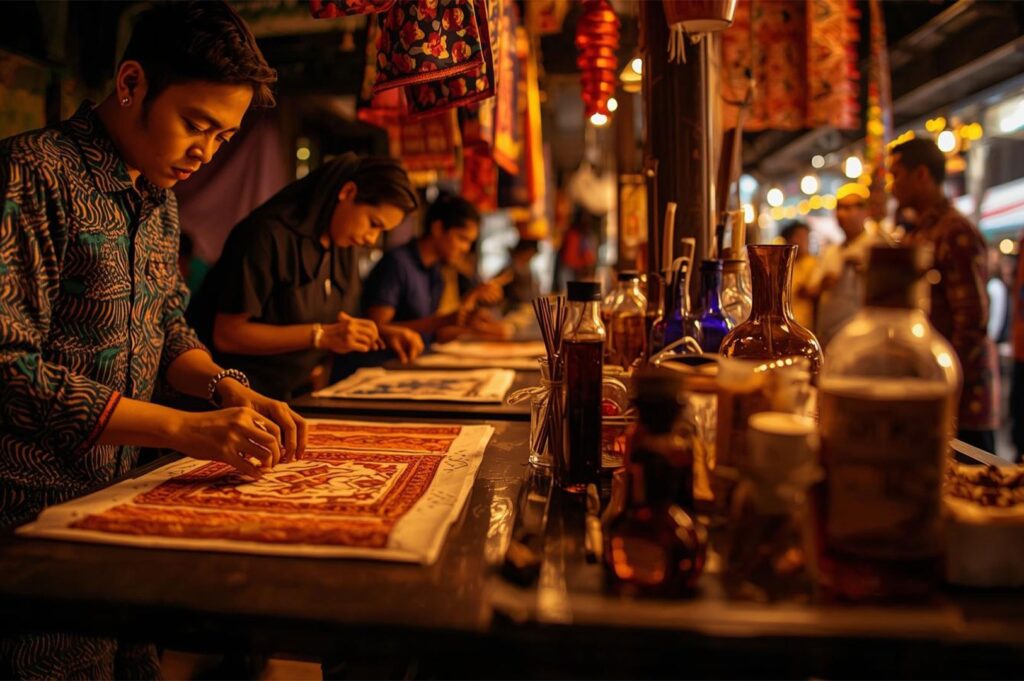
A visit to Kampong Glam is an invitation to experience Singapore’s living heritage. Start your exploration at the Malay Heritage Centre, an anchor of Malay arts, culture, and hope for continued preservation. Exhibitions reveal the area’s transformation through five years, decades, and generations—from its early days as a royal seat to today’s thriving historic district. Programming includes workshops, performances, and engaging tours led by the National Heritage Board, connecting visitors to the kampong’s local crafts, such as batik printing, traditional perfume blending, carpet weaving, and other Malay arts.
Kampong Glam remains the spiritual heart of Singapore’s Muslim community. The Sultan Mosque calls the faithful to prayer, and festivals such as Ramadan and Hari Raya bring crowds to the streets for lively night bazaars, food, and celebration. Ideals of community, respect, and tradition are visible in museums, mosques, heritage shophouses, and in the day-to-day life of residents. Here, cultural life is vibrant: see artisans at work, families gathering in community spaces, and artists sharing modern Malay culture through street art in public and gallery spaces.
Shopping Guide: Haji Lane, Arab Street & Bussorah Street
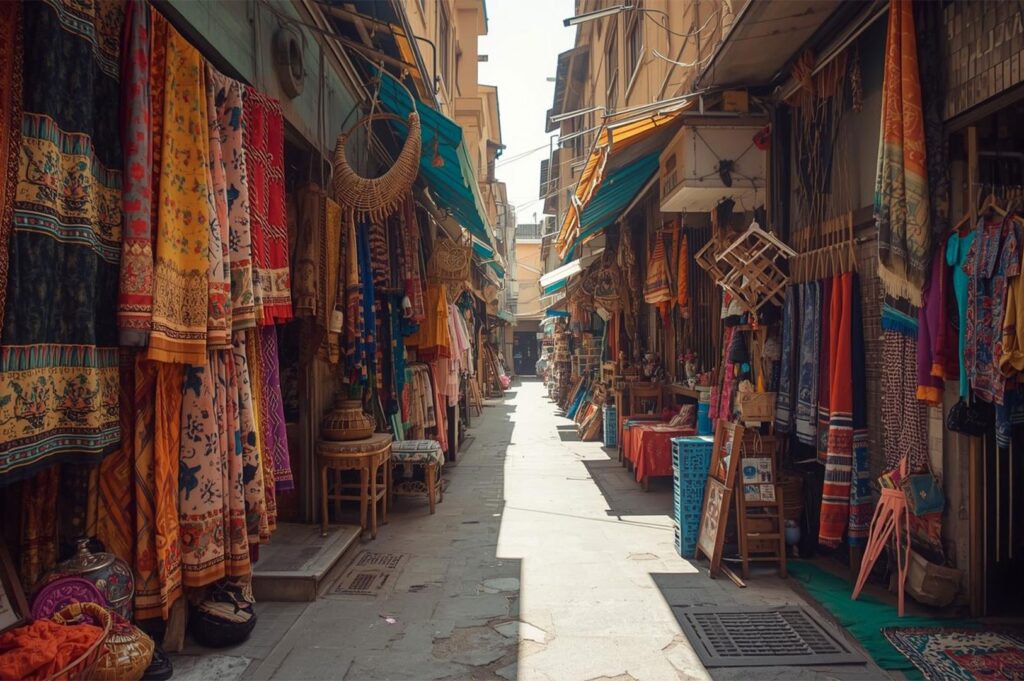
Kampong Glam is as famous for shopping as it is for heritage. Along Haji Lane, you’ll find a unique cluster of independent boutiques, offering everything from hipster fashion to quirky accessories. This narrow street has become a creative hub drawing visitors and locals to browse for hidden gems.
Arab Street is the district’s textile paradise, with rows of fabric and garment shops, silk and batik from across Southeast Asia, and Persian carpets stacked to the ceiling. It is here that generational family-run shops sit side-by-side with newer ventures, all reflecting the neighbourhood’s theme of tradition mixing with innovation. Don’t miss Baghdad Street or Bussorah Street for souvenir hunting and specialty shops with perfumes and essential oils. Here, traditional and modern retail merge seamlessly; it is not unusual to see classic Malay attire displayed alongside the latest global fashion trends.
On Muscat Street and nearby Kampong Bugis, find specialty perfume shops offering custom attar blends and essential oils—a nod to the Arab community’s deep roots in this historic kampong. Explore the area on foot to fully absorb the nuance and texture of its shopfronts, and take the opportunity to visit local markets, talk to shopkeepers, and discover unique finds you’ll want to share with friends and family.
Culinary Journey: Iconic Food, Traditional Eateries & Modern Cafés
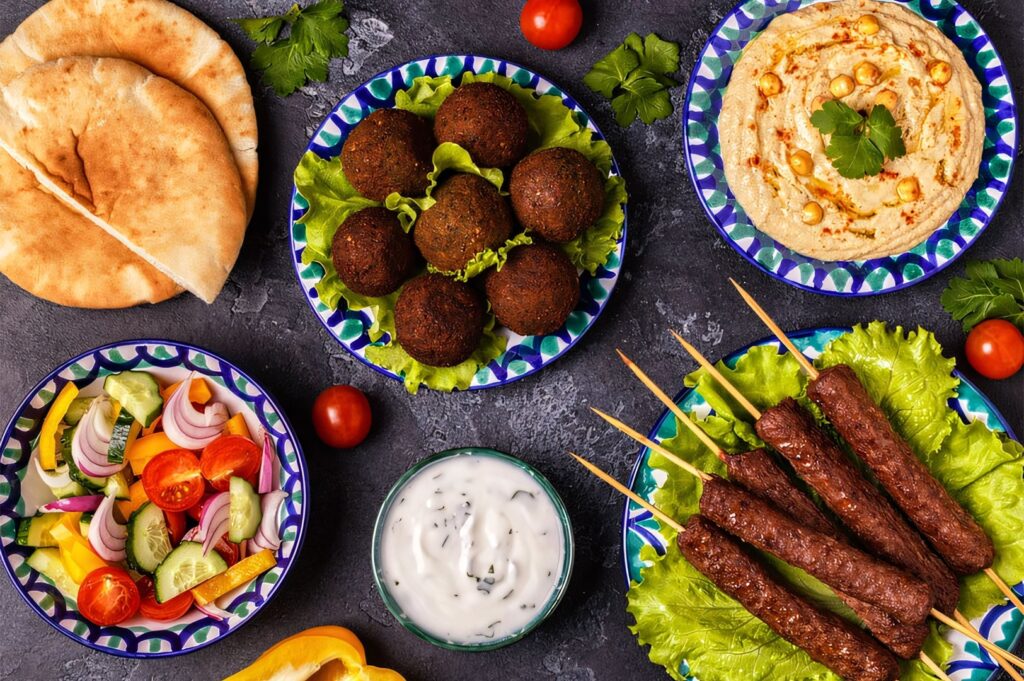
Kampong Glam is a place where Singapore’s development is best tasted in its food. The culinary scene here is among Singapore’s most diverse—centering on halal food options loved by the Muslim community but drawing visitors of every background for authentic flavour.
Begin with traditional Malay cuisine: nasi padang (rice served with myriad savoury dishes) is a must-try at celebrated family-run restaurants like Hjh Maimunah. Nasi lemak (fragrant coconut rice with accompaniments), satay, ayam masak merah, ikan bakar, and other local classics abound in the local eateries—a living testament to the district’s heritage. Dive into the Arab and Middle Eastern scene at famed establishments along Arab Street, where kebabs, hummus, falafel, and rich biryanis fill the air with the scent of spices.
Don’t miss Kampong Glam’s modern cafés for espresso, lattes, and inventive desserts. Indie coffee houses and bakeries serve up everything from traditional kueh to international patisserie, often in shophouse settings decorated with local art. For generations, food has been the heart of community life here—explore both traditional eateries and vibrant new restaurants for a complete culinary experience. Sweet treats such as kueh, baklava, and ice cream in kampong-inspired flavours round off the district’s delicious appeal.
Modern Evolution: Arts, Street Art & Nightlife
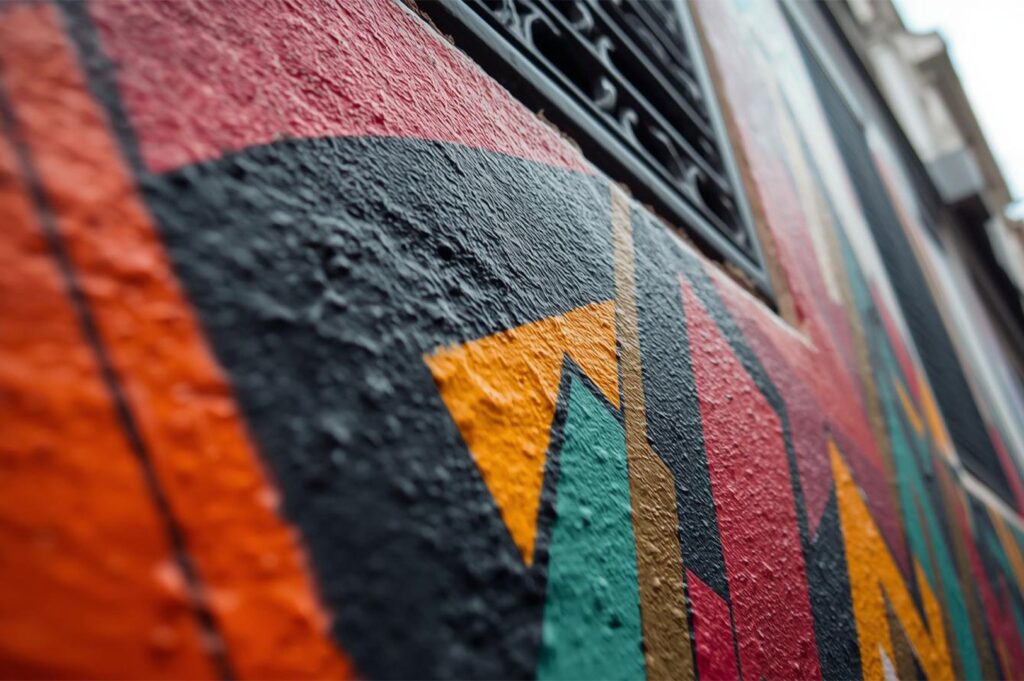
Kampong Glam continues to reinvent itself as a showcase for Singapore’s creative spirit. The district’s famous streets—particularly Haji Lane and Bali Lane—have become famous for bold street art, colourful murals, and ever-evolving urban creativity. Galleries and pop-up exhibitions foster an environment where young artists can engage with historic themes. Seasonal art walks and community events highlight the district’s blend of tradition and modernity.
As night falls, Kampong Glam’s energy transforms. Classic shisha cafés still offer a hint of Middle Eastern influence, but a new wave of bars, jazz spots, and live music venues attest to the night-time life of this neighbourhood. While the district is thriving, gentrification and change are ongoing challenges, and both government and local leaders remain passionate about preserving the heritage, identity, and community life that have defined Kampong Glam for generations.
Practical Visitor's Guide: Tours, Transport & Tips
The best time to visit Kampong Glam is in the late afternoon, as the light softens and both shops and restaurants are open. Weekends are lively, especially during major holidays when cultural celebrations take over the streets.
Getting there: Kampong Glam is centrally located— just a short walk from Bugis MRT, with easy access via Jalan Besar and Waterloo Street. Numerous bus lines serve the area, and the district is perfect for exploring on foot, with walking tours available through heritage organizations and museums.
Tours and exploration: A two- to three-hour walking tour can cover all of the main sites—start at the Malay Heritage Centre, walk to Sultan Mosque, shop along Arab Street, Muscat Street, and Bussorah Street, then unwind at a café on Haji Lane. The National Heritage Board and other local organisations sometimes offer guided tours for a more in-depth look at Kampong Glam’s rich history.
Etiquette: Dress modestly when visiting mosques or religious sites, speak respectfully, and always ask before photographing people in prayer or at work. Many heritage shophouses feature narrow five-foot ways; be aware and considerate of visitors with mobility needs.
Conclusion: Preserving Kampong Glam’s Living Heritage
Kampong Glam is a vibrant tapestry intertwining Singapore’s Malay, Muslim, and multicultural heritage—a district where every mosque, shophouse, and traditional eatery tells a living story. From its origins as a royal kampong established by Sultan Hussein and Singapore’s early governments, through centuries of evolution as a port, community, and creative hub, it stands today as an authentic, irreplaceable neighbourhood. For visitors and locals alike, Kampong Glam is the perfect example of how past and present, hope and heritage, can co-exist—reminding us that the preservation and sharing of culture are powerful foundations for Singapore’s future.

